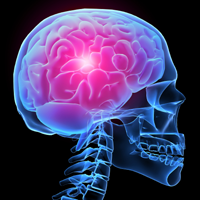Article
Testosterone Levels Not Associated with Stroke Risk
Author(s):
Researchers reported no association between endogenous testosterone and incident stroke and ischemic changes in men evaluated via brain MRI imaging.

Studies have shown that both low and high circulating testosterone levels are associated with atherosclerosis in men and are risk factors for cardiac and cerebrovascular events.
At ENDO 2015, Reshmi Srinath, MD, fellow in the Department of Endocrinology, Diabetes & Metabolism at Johns Hopkins University School of Medicine, presented results from the Atherosclerosis Risk in Communities (ARIC) study, a large ongoing prospective multicenter cohort of people aged 45-64 years at baseline initiated in 1987 to evaluate risk factors associated with incident cardiovascular disease (CVD).
Srinath and her colleagues evaluated a cohort of male ARIC participants who were free of CVD (including stroke) and without prior testosterone therapy to determine if low testosterone is independently associated with incident cerebrovascular events and the presence of ischemic changes on brain magnetic resonance imaging (MRI).
In the cohort (n=1558) researchers measured plasma total testosterone by liquid chromatography mass spectrometry (LC-MS) using samples obtained in the morning. The mean [SD] plasma total testosterone for the group was 401 [165] ng/dL.
They used the Cochran-Armitage test for trend and general linear regression models to assess the cross-sectional association of testosterone quartile with demographic characteristics and cardiovascular risk factors. They performed proportional hazard regression analysis to assess the association of testosterone quartiles with incident stroke through 2011.
A subset of participants underwent brain MRI at visit 5 (2011-2013) with semiquantitative evaluation of white matter hyperintensities (WMH) as well as cerebral infarcts (cortical or subcortical). Linear and logistic regression models were used to assess the association of testosterone quartiles with these ischemic changes. Multivariable regression analysis was adjusted for age, race and ARIC study center, body mass index (BMI), waist circumference, smoking status, diabetes, hypertension, LDL and HDL.
Srinath presented the following results: In the 1558 males (mean [SD] age = 63.1 [5.6] years, BMI = 28.2 [4.27] kg/m2) the median (interquartile range) plasma testosterone was 377.6 (288.4 - 480.1) ng/dL. Lower testosterone was significantly associated with higher BMI, greater waist circumference, the presence of diabetes, hypertension, lower HDL, and never smoked. Median follow-up for incident stroke was 14.1 years.
Following multivariable adjustment, there was no association of testosterone quartile (Q) with incident stroke (hazard ratios [95% CIs]) for Q1-Q3, each vs. Q4: 1.08 [0.56-2.08], 0.85 [0.44-1.66], 0.65 0.33-1.30]). Similarly there was no association of testosterone quartile with WMH (results not provided), or with cortical and subcortical infarcts on brain imaging (odds ratios [95% CIs] for Q1-Q3, each vs. Q4: 0.65 [0.28-1.49], 0.65 [0.29-1.45], 0.54 [0.26-1.16]).
Srinath and her collaborators concluded that, after controlling for key CVD risk factors, there was no association between endogenous testosterone and incident stroke and ischemic changes/WMH on brain MRI imaging in men within the ARIC cohort.
Srinath noted that this study had certain limitations. For example, only a single sample was taken from each subject for plasma testosterone determination, although the time of day was standardized, and there were a limited number of stroke events.
A member of the audience suggested considering a study to examine risk in testosterone deficiency. A questioner mentioned his own study in older men that found that low testosterone was a predictor for stroke and asked if the cohort in the present study was younger and/or homogeneous. Srinath said the mean age was about 63 years and white and black subjects were equally distributed.
Another asked if SHBG was measured. Srinath said the assay was not available for the study and therefore free testosterone could not be determined.





